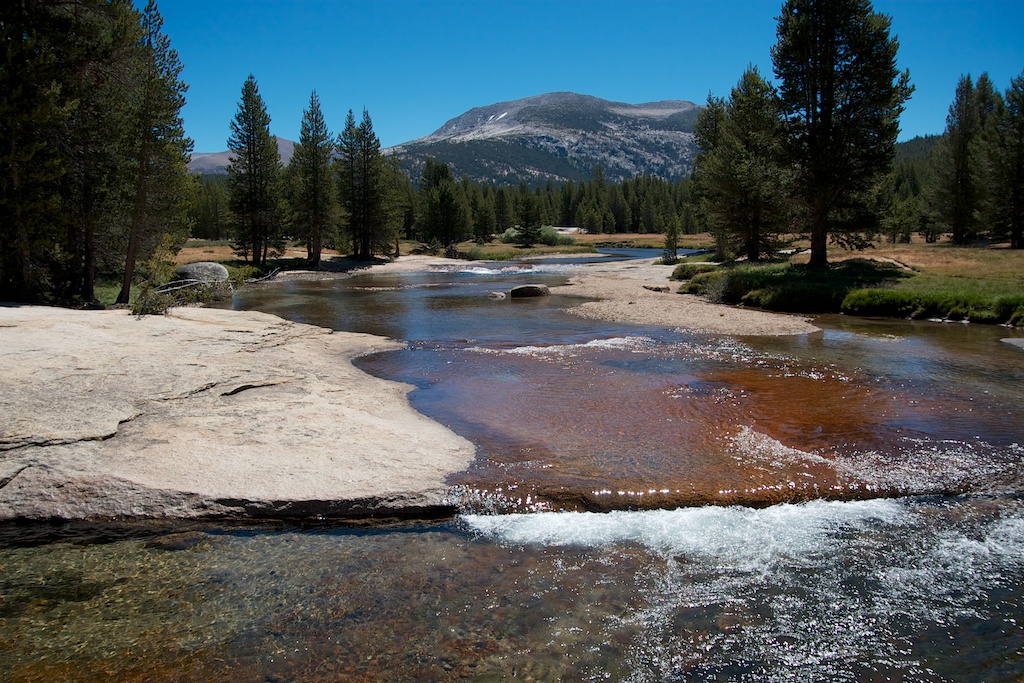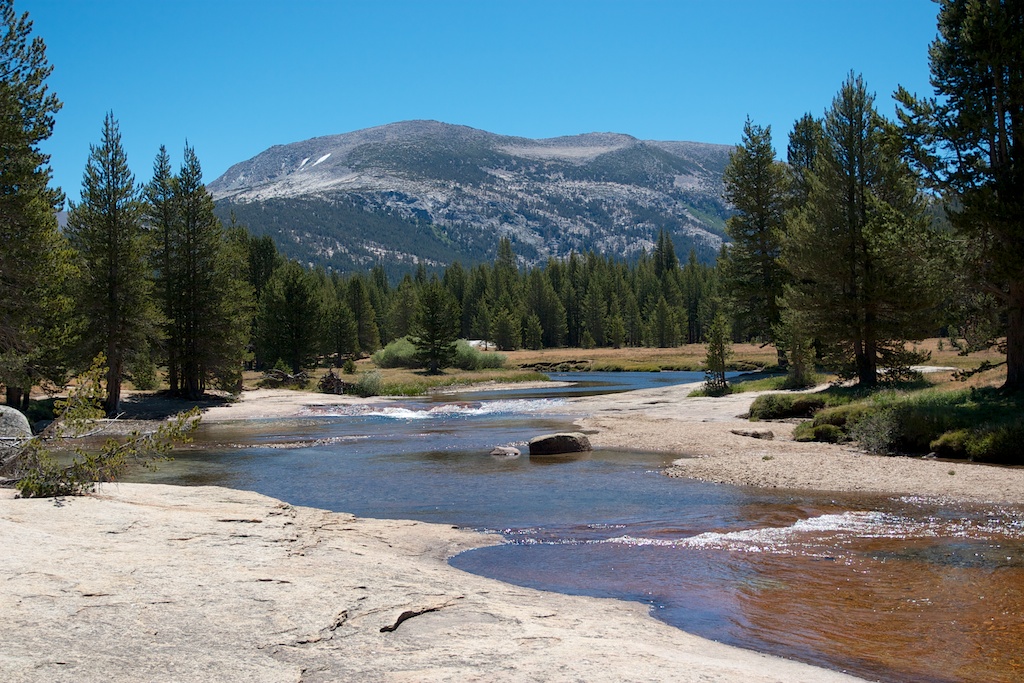Published in the Ocean Watch column, Honolulu Star-Advertiser © Susan Scott
August 6, 2012
Last week I emailed a Texas friend and longtime reader that I was going hiking in Yosemite National Park. Shirley replied, “This time of year must be nice in Yosemite. Bet you will get some good subjects there, too.”
No way, I thought. How many marine animals live in the High Sierras?
Well, one, at least. While crossing a bridge over a fork of the Tuolumne River, I saw an 8-inch-long tan speckled fish hovering in a clear pool.
 Photo by Susan Scott
Photo by Susan Scott
Rainbow Trout, Lyell Fork Tuolumne River, Yosemite National Park
“There you go,” my California friend said. “A baby rainbow trout.”
My sighting of this marine fish was a stroke of luck.
The rainbow trout is an oceanic species that, like salmon, returns from the sea to breed in the rivers where they were born. Unlike salmon, however, trout live to reproduce again and again, making the journey between ocean and birth river several times. Rainbow trout can live up to 11 years.
I was lucky to see this fish because the species is not native to the Tuolumne River. Historically, the fish occurred naturally as high as the Yosemite Valley’s Merced River. Waterfalls, however, prevented trout from migrating up the Tuolumne.

Courtesy Scott Davis
Lyell Fork Tuolumne River, Tuolumne Meadows, Yosemite National Park
And even though stocking of the species to fishless lakes and rivers in the park began in 1877, it stopped in 1991. Yet, there it was, one little trout to make my day and pique my interest.
It took some digging to sort out the facts of this fish. The trout we call rainbow is the same species (Oncorhynchus mykiss) as the trout we call steelhead. When the fish lives in a large body of water (either an ocean or a freshwater lake) for two to three years and swims up rivers to reproduce, the fish is known as a steelhead trout, for its silvery appearance.
When the same fish does not migrate up rivers to spawn, meaning it’s stream- or lake-bound, it’s called a rainbow trout. The term comes from the pink to red stripe that runs lengthwise along each side of the body.
Another confounding detail is that although steelhead/rainbow trout are native only to coastal regions of the Pacific Ocean, people have introduced the tasty fish to at least 45 countries. Some reproduce in their alien habitats, and some do not. When the fish don’t replenish themselves, humans do it for them, raising the hardy trout in hatcheries and restocking lakes and rivers, mostly for sport fishers.
Since the first non-native fish introduction into Yosemite waters, more than 33 million fish have been deposited there. Stockers once hauled fry in coffee cans and jugs on the backs of mules. Dropping fish by airplane began in 1952. But because the trout eat native tadpoles and insect larvae, the introductions have hurt native species.
Stocking in Yosemite stopped in 1991, and fish removal in some areas is continuing. Even so, the trout are likely there for the long haul. In some park areas they are reproducing.
When I stopped to admire that little fish in a back eddy, I had no idea it carried so much baggage.
Shirley’s accurate prediction that I would find marine subjects in the mountains reminds me once again that oceans are the heartbeat of life on this planet. Even in the High Sierras.

Courtesy Scott Davis
Lyell Fork Tuolumne River, Tuolumne Meadows, Yosemite National Park